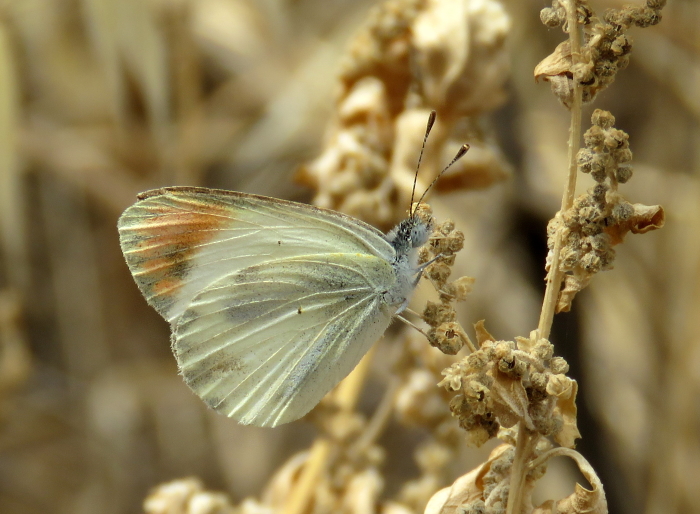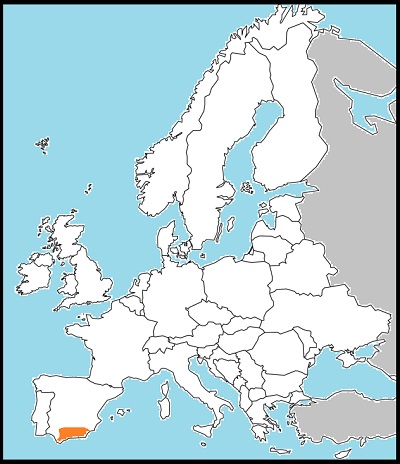
Male, Málaga, August 2020

Male, Málaga, July 2021

Male, Málaga, July 2021

Female, Málaga, July 2021

Female rejecting male, Málaga, July 2021

Male, Málaga, July 2021

Male, Málaga, July 2021

Female on the foodplant, Málaga, July 2021

Málaga, July 2021

Málaga, July 2021

Málaga, July 2021

Egg, Málaga, August 2020

Freshly laid egg, Málaga, July 2021

The foodplant, caper, Málaga, August 2020

Distribution
This lovely little butterfly is a rare resident in the far south of Spain but populations are supplemented each year by migration from North Africa. The Spanish populations are said to increase through the year, from a very weak first brood in February or March through to maximum numbers in the autumn. As with many migrant butterflies, however, numbers vary greatly from year to year. In North Africa it is continuously brooded. It breeds in hot, dry, rocky places where the foodplant, caper, grows. I know just one site, in the Province of Málaga, where capers grew out of an old wall. I discovered it in 2020, when I saw the first male above and located a single egg on a caper leaf. In 2021 I returned and found many more individuals.
The butterfly is tiny - much smaller than an orange tip. The female has more dark scaling in the orange wingtip but is otherwise similar to the male. Both sexes may show more or less grey smudging on the wings, particularly in a streak along the trailing edge of the forewing. Later generations are said to be darker, though all the individuals above were photographed in late July or the beginning of August and they include some very clean, bright individuals. Females hover around caper plants, lingering ever so briefly on leaves to lay before flitting on. Males patrol the same plants in search of females, intermittently taking time out from the intense heat to rest in the shade.